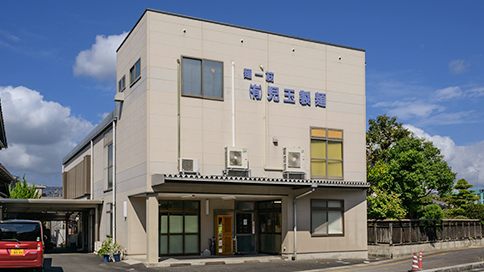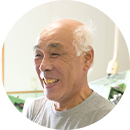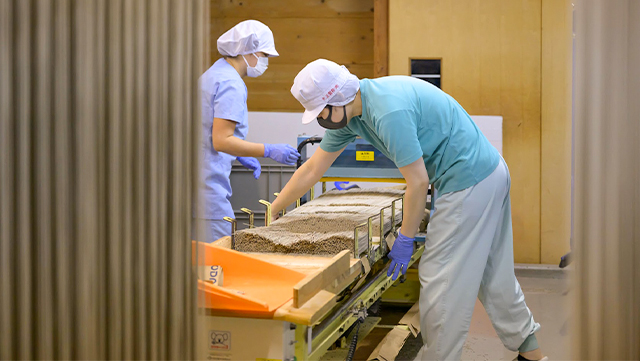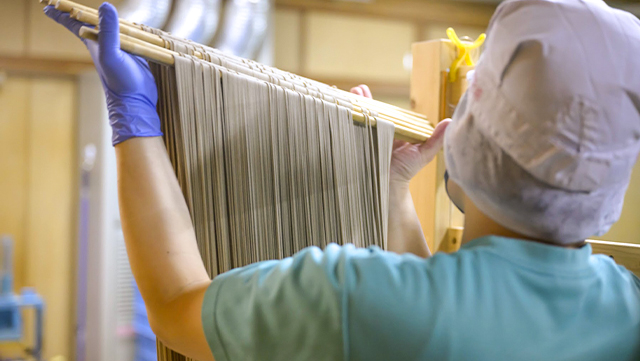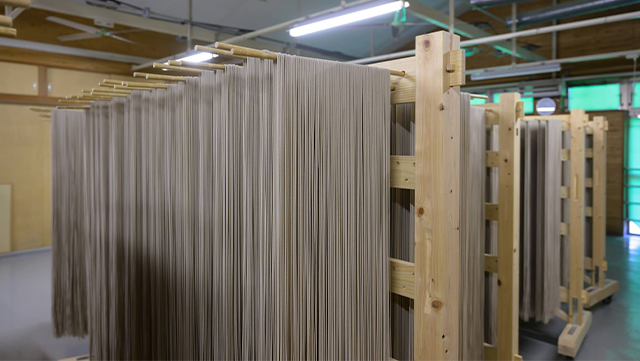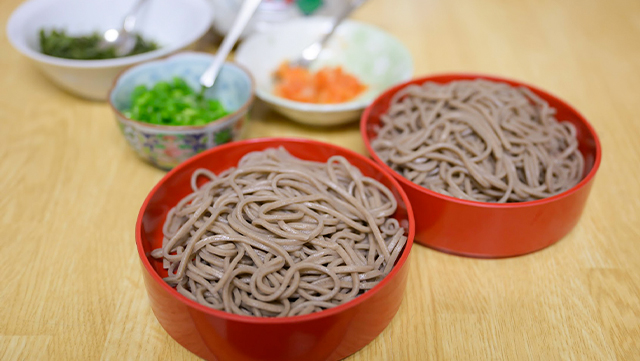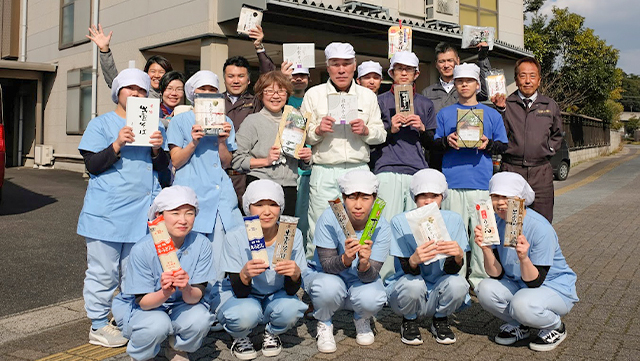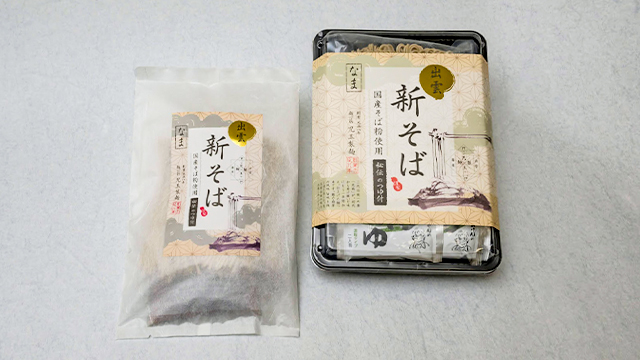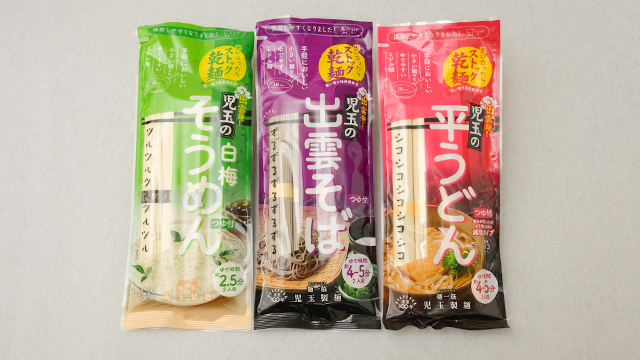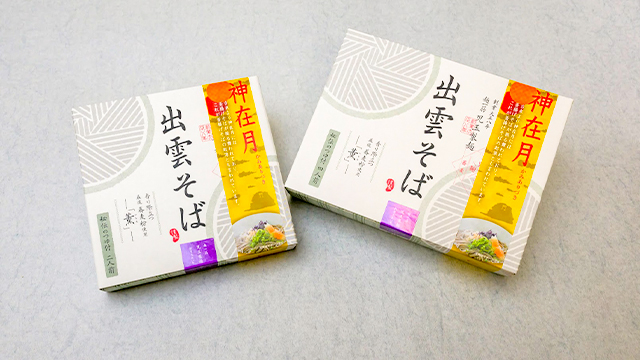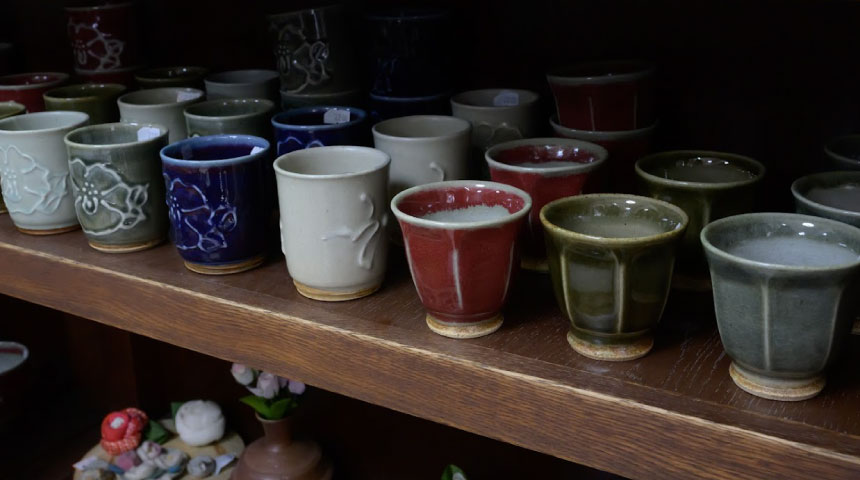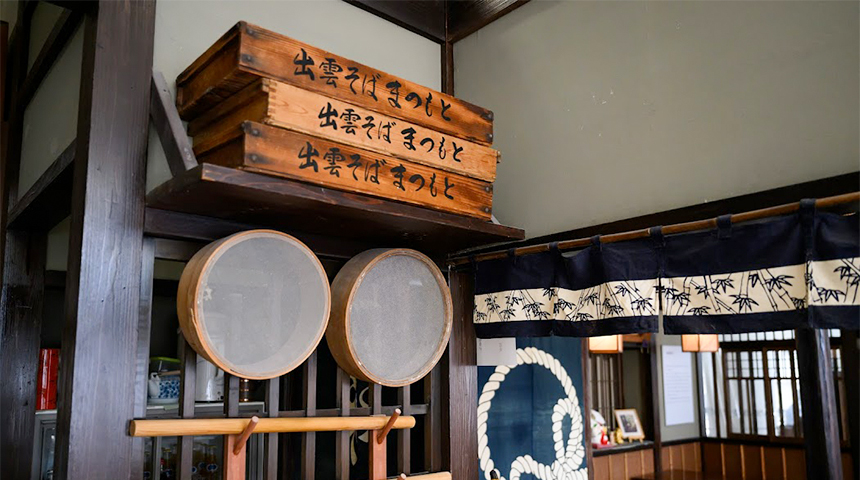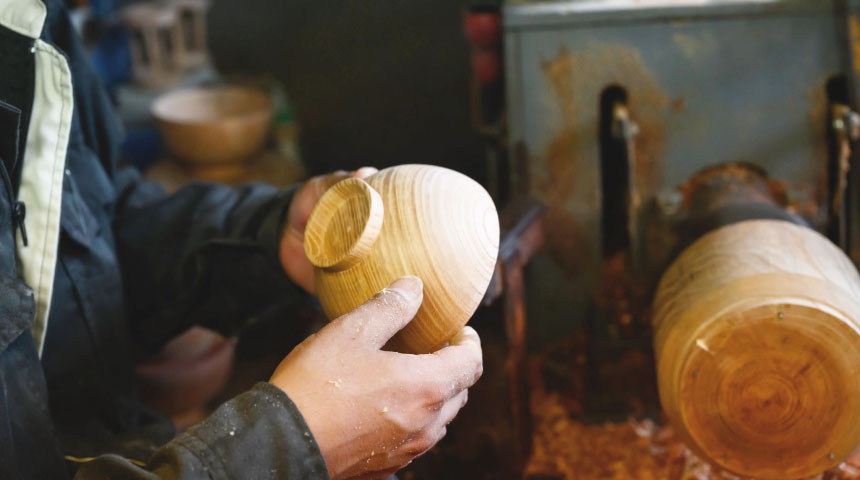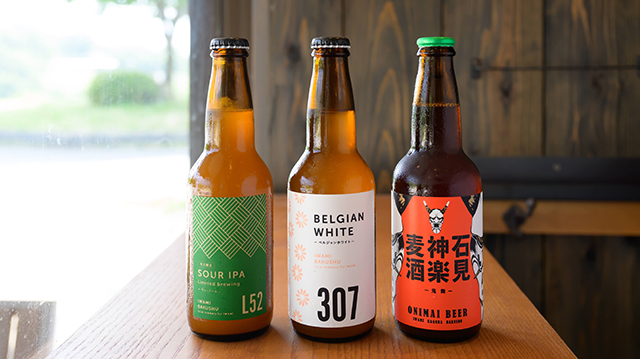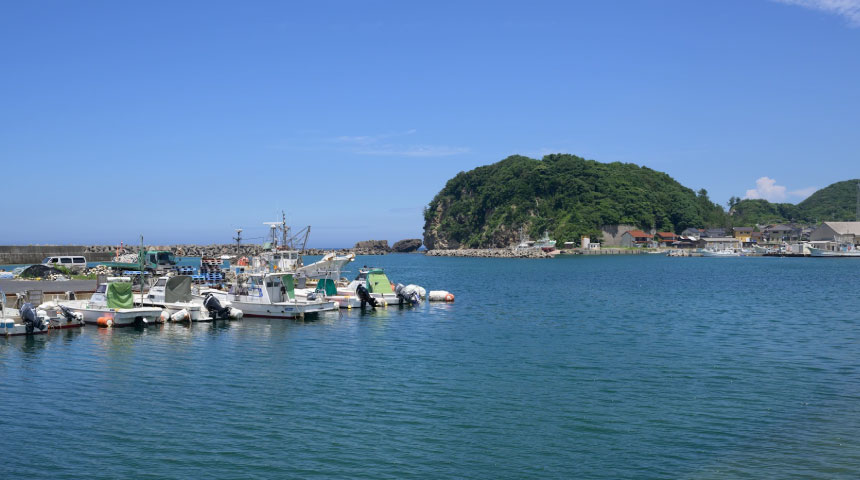Kodama Seimen is a leading noodle factory in Izumo region, founded in 1919 during the Taisho era (1912-1926) and celebrated its 100th anniversary a few years ago. Their noodles are known for the uniquely smooth surface, while preserving tradition, they actively develops new product to meet new needs and demand.
We interviewed Mr. Takashi Kodama, the third-generation owner of Kodama Seimen.
Why Kodama Seimen attracts people
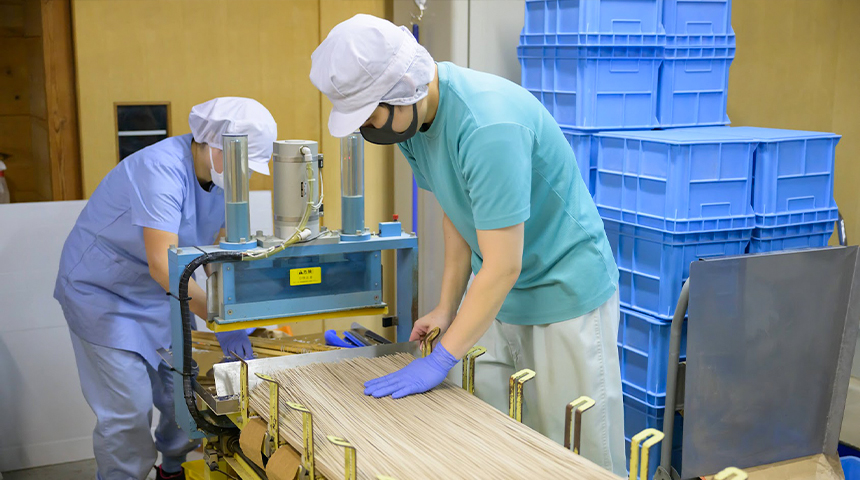
- What do you feel about your company celebrating its 100th anniversary?
-
I'm very happy. We have been able to keep our business until now because our customers continue to choose our products.
We would like to continue to make products that our customers are happy to buy, to use as a gift, and to enjoy its good taste!
- Tell us why people love Kodama Seimen’s products.
-
I think it’s the fact that we make the best use of the attributes of ingredients - buckwheat and wheat flours. I always do everything myself, from selecting the ingredients to mixing and tasting. There are quite many varieties and manufacturers in buckwheat and wheat flours. So, I carefully select and blend the ones that suit our products.
I have been taught by my father to "sharpen my five senses and work carefully," I try to check the production myself from the beginning to the end. Especially the taste of noodles differs depending on the method and amount of water added. In order to verify such differences, we place importance on watching with own eyes, touching with own hands, trying in own mouth, and listening to the sounds during our manufacturing process.
Dried noodles, a traditional Japanese preserved food, and secret mentsuyu (noodle soup base)
- Izumo Soba and SDGs (Sustainable Development Goals)
-
Do you know that dried noodles are an SDG's-friendly food? Dried noodles have a modern image of being made in special factory machines, but in fact, they have a long history and are a traditional Japanese preserved food, as records show that they were sold as far back as the Nara period (710-794).
Kodama Seimen has been striving to improve the quality of its dried noodles for generations.
The founder of the shop dried his noodles outdoors in the sun to prevent mold from growing on them and to dry them quickly.
The 2nd-generation owner switched to a slower indoor drying method due to his concerns that the flavor of the buckwheat could be lost by drying in the sun.
And now the 3rd-generation owner has created an environment that allows slow maturation and drying by building the drying room in cypress that has a sterilizing effect.
This is how the evolution continued; resulting in dried noodles that are aromatic when boiled and have a nice, smooth taste.
- For you, Mr. Kodama, what is the best way to eat soba?
-
I think cold warigo soba is the best.
Then, as with all noodles, not just buckwheat noodles, it is important to boil them in plenty of water. It is also important to boil them with high heat but not to spill over. If a family does not have a large pot, it is better to boil fewer noodles!
- Tell us what you are interested in now, and what you wish to try in the future.
-
I'm curious how soba is eaten overseas, where the food culture is different.
For example, Russia and Ukraine are the world's leading buckwheat flour producers. Buckwheat flour is commonly eaten in the form of crepes there. In Japan, crepes are mainly made from wheat flour. Different countries have different food cultures; I am very interested in how people overseas would enjoy our products.
Indeed, we are now putting efforts into exporting by sending samples when we receive inquiries from overseas.
Meanwhile, family structures are changing over the time. I would like to keep up with the times by making every effort in new product development while maintaining important traditions.
About Kodama Seimen
Kodama Seimen's products, which are carefully made by hand, are also available on shopping websites. If you haven't tried them yet, take this opportunity to experience their deliciousness.
Products
Overview
- Kodama Seimen
- 1181-2 Imaichi-cho, Izumo, Shimane 693-0001
- Phone : 0853-21-0388
- Fax : 0853-30-7388
- Website : https://www.kodama-seimen.co.jp/index.html
- Facebook : https://www.facebook.com/kodama.seimen/
- Instagram : https://www.instagram.com/iemen_recipe_kodama/
